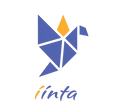With over 20,000 hours of flying time, Captain Michel Treskin has a remarkable, if not “Amazing” history in aviation. In fact, his skills as a pilot earned him the nickname “The Amazing.” His flying suits, and official parade uniform, were all embroidered with the moniker. Often, this caused Colonels and Generals to pause during inspections and ask, “how is Amazing today?”
The Ottawa native began flying at 10 years old with his father. Due to the style of plane, he had to wear a parachute, which he states was basically his size. “If I would have had to jump, I would have slipped through it.”
The glider was fully aerobatic and Treskin recalls doing a great deal of aerobatic maneuvers and “loving” every second of it. He was simply at home in the sky.
Although he began soaring through the clouds at 10 it wasn’t until he turned 13 that he began official training. However, despite completing the training, youth weren’t permitted to legally fly solo until the age of 16.
At 20 years old, Treskin studied Geophysics at the University of Montreal from 1974 to 1976 before training, and serving, in the military from 1977 to 1989. It was natural progression for him to proceed to the military as he had an interest in flying cargo planes, jets and helicopters.
